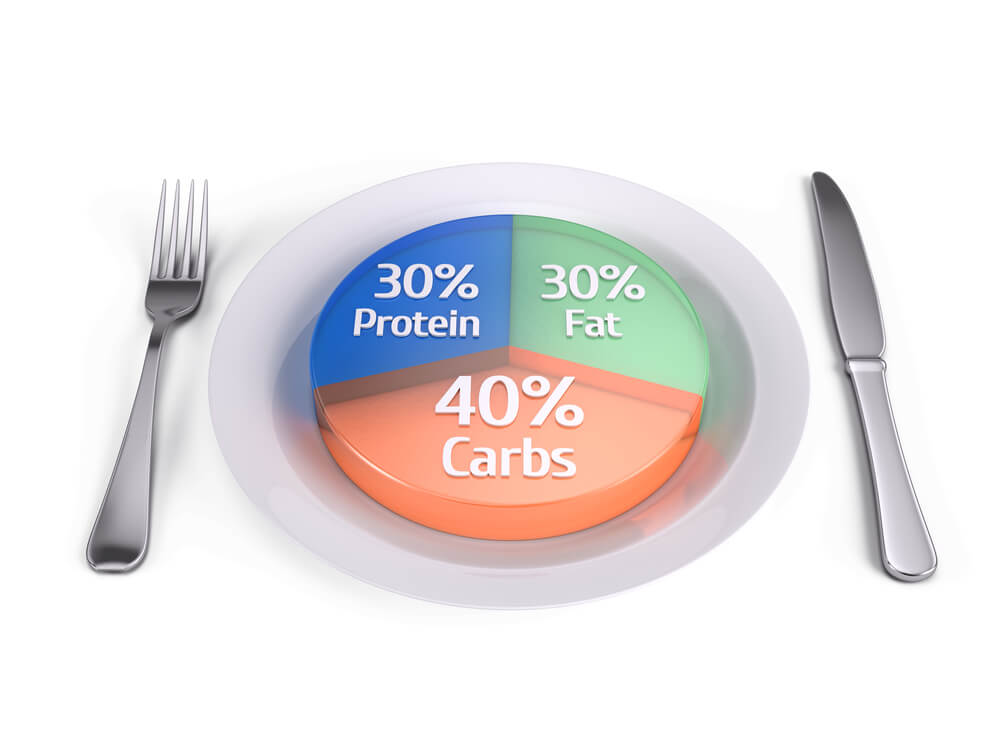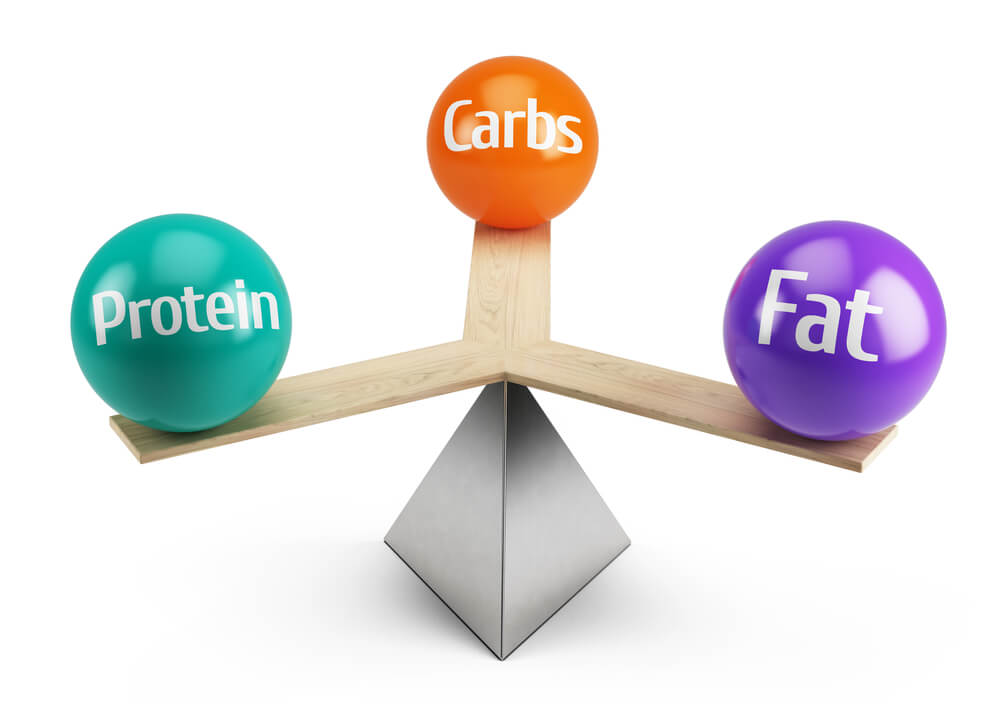
Want to use science to get to a better body? Great. In that case, you need to know how to use a macronutrient calculator. Want to know why? We give you all the info right here! You’re welcome!
The main strength of macronutrient calculators is their ability to go past the four basic food groups. They give you a detailed breakdown of what your body needs on a daily basis to function, gain or lose weight.
Using this info, planning a healthy diet that helps your workout routine is less of a guessing game. You’ll achieve that also knowing that you are using cutting-edge know-how that draws from scientific research.
What Are The Basics?
Three major factors affect your success when it comes to losing, maintaining or gaining weight and muscle. The first is your basal metabolic rate (BMR). That’s followed by your total daily energy expenditure (TDEE). Your daily level of activity and exercise also play a vital part.
The basal metabolic rate measures the amount of calories you use over a 24-hour period of time, while at rest. For athletes, pro tests measure oxygen and carbon dioxide levels after a night’s sleep and a 12-hour fast.
For those serious about fitness, a macronutrient calculator uses the Mifflin St. Jeor equation to give you a precise idea of your BMR. The equation uses your age, gender, weight and height to give you the minimum number of calories needed daily to stay at your current weight.

How Does Knowing Your BMR Help?
With this number, you can use a macronutrient calculator to fine-tune the amounts of nutrient and vitamin-rich foods you eat. This gives you the chance to make allowances for workout days and on days when your body is recovering.
It is helpful as there are precise amounts of carbs, proteins, and fats needed to reach your fitness goals. These adjust your body’s calorie intake based on your BMR. The advised levels of each for an active diet by the USDA fall between 45 to 65% for carbs. Of course, you need to get about 10 to 35% for protein. That leaves between 20 to 35% for healthy fats.
Based on this, a macronutrient calculator uses your daily calorie intake and personal info to calculate a formula for all three macronutrients needed in your diet. As a rule of thumb, on workout days when actively bulking up, you should boost your carbs and reduce fats. On rest days, decrease the carbs and enjoy more healthy snacks.
When trying to lose weight, you should lower your fat content and increase carbs, as well as proteins on workout days. When resting, lower your carb intake and increase proteins and fats.
What Is A TDEE Score And Why Is It Important?
Using your BMR, calculators use another formula to find the total daily energy expenditure. This is the complete intake of calories that you use each day at rest, when eating and when exercising. It is also the number that helps with weight loss, creating a calorie deficit below your TDEE. When building muscle, your daily intake rises above the TDEE by 500 calories.
You can check out our TDEE calculator here.
All macronutrient calculators use a set of rules based on these numbers. It’s vital to find the right one that uses the data while giving credence to the other factors that shape the final report.
What Other Factors Influence The Results?
Let’s take a look at the other factors used by the calculator before diving into the types of food that are high in proteins, carbs, and fats.
Programmed to adjust for the different attributes of each person, accurate calculators use a complex algorithm to give you answers that make sense. These go beyond the cookie cutter versions found through an Internet search. They leave little to question.
Age
Your metabolism slows down at a rate, on average, of 5% every 10 years after the age of 20. The body loses muscle mass and eating the same way that you did when you were younger means different results. A macronutrient calculator can help by giving you suggestions for new ratios of fats, carbs, and proteins in your diet.
Gender
A BMR calculator adjusts for gender, as women typically have a lower BMR than men, and ratios are different. There are also differences in men and women’s muscle density and body fat. An accurate calculator takes this into account and gives you reliable info for your body type.
Height And Weight
Tall people and those that weigh more have a higher BMR and need more daily energy. On the flip side, your BMR lowers when you lose weight as fewer calories are consumed. It also increases when on an intense workout program to build muscle.
Pro tip – Each time your body weight changes by more than five pounds, recalculate your daily needs and adjust your diet according to the new details.
Daily Exercise
If you work out using a strenuous routine and want to gain weight, then you need to consume more calories. Keep in mind that the types of food you eat should also change depending on what day it is in your workout week. Carbs are cut back for rest days when they aren’t used by the body for energy.

What’s The Big Deal About Proteins, Carbs, And Fats?
Calculators tailor your diet to your fitness goals. Using the suggestions effectively means that you need to have a good grasp of the types of food in each category and what they do for your body.
This Is A List Of The Good Carbs
Carbohydrates give you the juice to keep moving during a big workout. Based on your goals, they can take up to 65% of your daily intake.
Potatoes, long-grain rice, fruits, veggies, and fiber are great sources of carbs.
Why?
They are rich in vitamins and great at replenishing your muscles. Wheat and white rice have their drawbacks. That’s the case as they are limited in their ability to give you the energy you need.
Proteins Are The Building Blocks
Protein ratios should also be high on workout days as they are key for building and repairing muscles. Your body adds or loses weight and muscle and finding the right balance of lean proteins is a crucial part of a macronutrient diet. Meat, fish, and chicken give the body the protein it needs and they help with circulation and digestion of food.
Why Do You Need Healthy Fats?
Fats have high vitamin content. They are an important part of a well-balanced ratio of macronutrients contributing to weight loss and a healthy immune system. Avocados, eggs, dairy, meats, butter and olive oil all have healthy levels of natural saturated fats. On the other hand, vegetable oils and fried foods are too high in unhealthy fat that the body can’t process.
When cutting back on carbs, saturated fats take up the slack and provide energy. They can also drain your body of energy when combined with a high percentage of refined carbs. A careful balance is needed.

Tips For Using A Macronutrient Calculator
Using today’s technology, your workout and diet are fine-tuned and matched to balance your fitness efforts. What follows are helpful tips to make the most out of the resources available.
What Should You Look For In A Macronutrient Calculator?
Understanding the whole picture is half the battle. Finding the resources that give you the tools you need to make informed decisions about your health is important.
Because finding the right ratio for calorie intake uses a complicated set of equations that takes factors into consideration that are tricky to get right, you should use a separate calculator that measures your BMR, in addition to one that makes suggestions to your diet.
Results should detail specific percentages of what to eat. As well, there should be plenty of info that explains the suggestions. This includes lists of ingredients, recipes, and easy-to-follow guides.
What’s The Best Way To Use Your Results?
Use the suggestions that you get to tailor a simple diet plan that’s high in protein, carbs, and healthy fats. Carefully choose the types of foods that are rich in vitamins and minerals. Be sure that you are avoiding those that have little nutritional value. That includes such things as sugars, wheat, and fried foods. Look for lean proteins that build clean muscle and include carbs from veggies and fruits, as well as from brown rice and potatoes.
Don’t forget that the basic rules do not change. Burning more calories that you take in leads to weight loss, and eating more than your metabolism can exert builds muscle and fat. By adjusting the amount and type of food that you eat using an advanced calculator, a winning combo that leads to a productive workout plan should, without doubt, be within your reach.
When planning a diet for working out, allow for meals that fall outside the rules. Set a limit for a certain number of meals that you can splurge on each week. Give yourself a break when the lines get blurred.
What Should You Be Aware Of When Using A Macronutrient Calculator?
The major consideration when using a macronutrient calculator is that it uses averages and trusted equations to give you suggestions. These get close to your BMR, but can’t compete with a pro test done in a specialist’s office.
If you workout using the suggested ratios and do not see an improvement, check with a nutritionist to make sure you’re on the right track. They know the nuances of the theories and can help find the missing balance if things feel out of whack.
For serious athletes, using a macronutrient calculator has its pros and cons. For those in the midst of serious workouts, the averages give you a system for keeping track of your progress during critical stages. At the same time, your dietary needs can change quickly, and the calculator helps to adjust percentages on the go.
Different conditions can adversely affect the calculator’s effectiveness. If you are at the start of an increased push to get serious about working out, talk to your doctor to cover all the bases.
Conclusion
The ratios and mathematical theories behind the technology of macronutrient calculators come from solid research. It has proven to accurately predict your BMR and reliably make healthy suggestions that improve your chances for success with your fitness goals.
While this is the widespread finding, there are exceptions. These exceptions are based on your workout, the type of sport you participate in and your body’s ability to process different kinds of foods. Allergies and existing conditions require special consideration. That’s why you should also think about using nutritional and fitness experts’ help to adjust your diet past the provided suggestions.
A good macronutrient calculator takes into account the energy your body needs while at rest to suggest ideal amounts of carbs, proteins, and fats for workout and rest days. This resource takes the mystery out of finding a healthy balance in your diet that aids your fitness goals.
It is a great tool when setting up a new workout routine.
Why?
It gives you a baseline to work from that gauges your body’s current metabolism, while it also lets you plan a realistic routine and an effective diet drawn from scientific findings.
With all of that said, for this to be effective, you need to keep track of the precise amount of each kind of protein, fat and carb you eat each day. You also need to check your intake against the BMR number and recommendations found using the advanced calculator. Be sure to keep this info with your workout journal for easy comparisons.
By Jon Jared
Terry
Latest posts by Terry (see all)
- How Important Are Net Carbs For Building Huge Muscle? - Apr 28, 2017
- The Matt Damon Workout Explained - Apr 27, 2017
- Watercress – Benefits And The Best Way To Consume It - Apr 26, 2017











[…] basic in the kind of support offered. Usually the supplements contain caffeine and a handful of nutrients to help give the effect of a satisfied appetite (or to help burn some added […]
[…] quick protein, you can ward off your food cravings with a protein smoothie. As the most satisfying macronutrient around, protein makes you feel fuller longer. A solid, go-to protein shake is a delectable mash-up […]
[…] quick protein, you can ward off your food cravings with a protein smoothie. As the most satisfying macronutrient around, protein makes you feel fuller longer. A solid, go-to protein shake is a delectable mash-up […]
[…] quick protein, you can ward off your food cravings with a protein smoothie. As the most satisfying macronutrient around, protein makes you feel fuller longer. A solid, go-to protein shake is a delectable mash-up […]
[…] quick protein, you can ward off your food cravings with a protein smoothie. As the most satisfying macronutrient around, protein makes you feel fuller longer. A solid, go-to protein shake is a delectable mash-up […]
[…] this reason, rice-based protein powder is quickly becoming a favorite ingredient among nutritionists keen on refining and redefining the healthy snacks we […]
[…] this reason, rice-based protein powder is quickly becoming a favorite ingredient among nutritionists keen on refining and redefining the healthy snacks we […]
[…] this reason, rice-based protein powder is quickly becoming a favorite ingredient among nutritionists keen on refining and redefining the healthy snacks we […]
[…] this reason, rice-based protein powder is quickly becoming a favorite ingredient among nutritionists keen on refining and redefining the healthy snacks we […]
[…] we eat too many or too few macros in a meal. For instance, if you were out at a restaurant, and there were simply no great choices […]
[…] we eat too many or too few macros in a meal. For instance, if you were out at a restaurant, and there were simply no great choices […]
[…] we eat too many or too few macros in a meal. For instance, if you were out at a restaurant, and there were simply no great choices […]